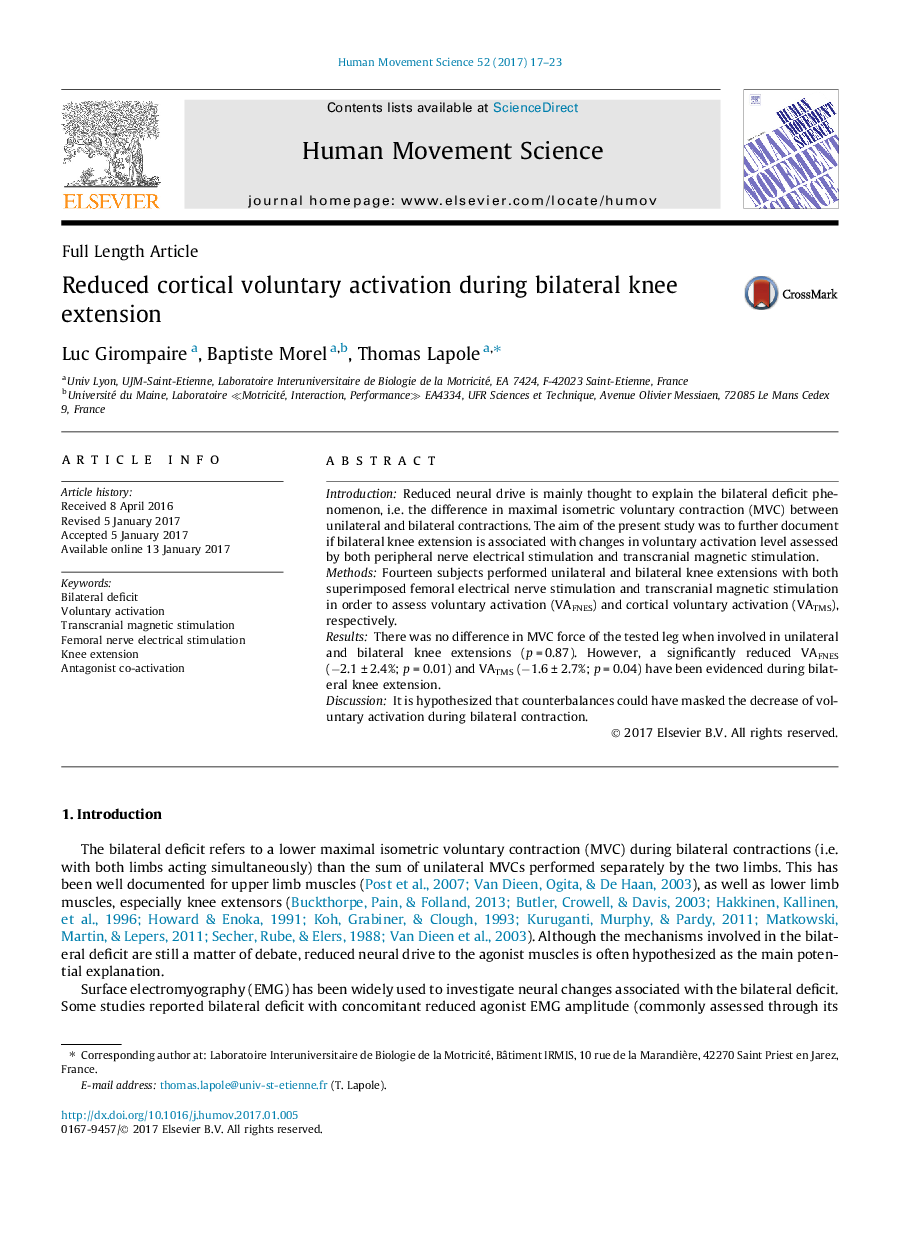| کد مقاله | کد نشریه | سال انتشار | مقاله انگلیسی | نسخه تمام متن |
|---|---|---|---|---|
| 5042051 | 1474213 | 2017 | 7 صفحه PDF | دانلود رایگان |
- Voluntary activation was investigated during unilateral and bilateral contractions.
- Peripheral electrical stimulation and transcranial magnetic stimulation were used.
- No bilateral deficit was demonstrated.
- Significant decreased voluntary activation was observed during bilateral contractions.
- Counterbalances could explain the present results.
IntroductionReduced neural drive is mainly thought to explain the bilateral deficit phenomenon, i.e. the difference in maximal isometric voluntary contraction (MVC) between unilateral and bilateral contractions. The aim of the present study was to further document if bilateral knee extension is associated with changes in voluntary activation level assessed by both peripheral nerve electrical stimulation and transcranial magnetic stimulation.MethodsFourteen subjects performed unilateral and bilateral knee extensions with both superimposed femoral electrical nerve stimulation and transcranial magnetic stimulation in order to assess voluntary activation (VAFNES) and cortical voluntary activation (VATMS), respectively.ResultsThere was no difference in MVC force of the tested leg when involved in unilateral and bilateral knee extensions (p = 0.87). However, a significantly reduced VAFNES (â2.1 ± 2.4%; p = 0.01) and VATMS (â1.6 ± 2.7%; p = 0.04) have been evidenced during bilateral knee extension.DiscussionIt is hypothesized that counterbalances could have masked the decrease of voluntary activation during bilateral contraction.
Journal: Human Movement Science - Volume 52, April 2017, Pages 17-23
